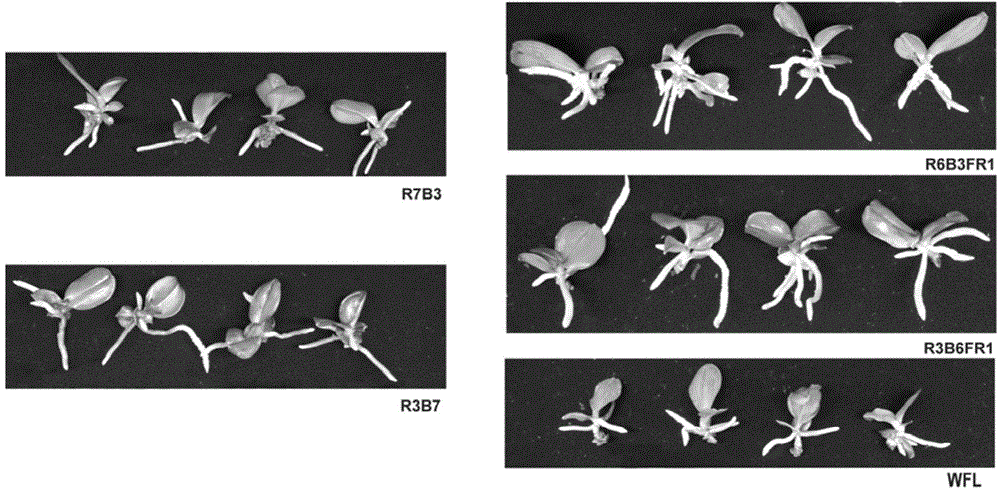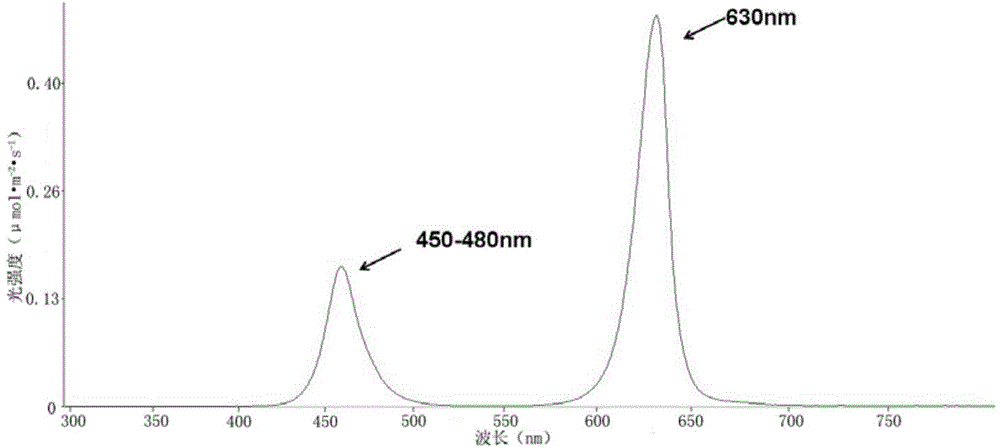Method for promoting rooting of butterfly orchid tissue cultured seedling by utilizing LED light source
An LED light source and phalaenopsis technology, which is applied in the field of plant tissue culture, can solve the problems of not giving the light-quality ratio, not involving the influence of far-red light on phalaenopsis, etc., so as to increase the number of roots, improve the quality of seedlings, and improve dry matter. the cumulative effect of
- Summary
- Abstract
- Description
- Claims
- Application Information
AI Technical Summary
Problems solved by technology
Method used
Image
Examples
Embodiment 1
[0045] (1) In the experiment, the flower stalks of Phalaenopsis 'Green Bear' (Green Bear) purchased from the Jinying Flower Seedling Promotion Center of the Institute of Environmental Horticulture, Guangdong Academy of Agricultural Sciences were selected as explants. Differentiation was induced on the pedicel axillary bud induction medium, and the induction culture conditions were culture temperature 25±2°C, relative humidity 50%-60%, light time 12h / d, and cultured in the ordinary tissue culture light environment of the covering newspaper in the previous week. When the light intensity is 5±1μmol·m -2 ·s -1 Cultivate for 7 days in the normal tissue culture light environment, after uncovering the newspaper, continue to culture in the normal tissue culture light environment for 45-60 days, that is, when the light intensity is 20±2μmol·m -2 ·s -1 Cultivate for 45-60 days under ordinary tissue culture light environment to obtain clustered buds;
[0046](2) Cut the clustered buds...
Embodiment 2
[0064] What this embodiment is different from Example 1 is that the experimental material that adopts is that the large flower line Phalaenopsis 'big Chilli' (Big Chilli) purchased from the Guangdong Academy of Agricultural Sciences Environmental Horticulture Seedlings Promotion Center is a material, and the rest are the same as Example 1 is the same.
[0065] The effect of LEDs with different light qualities on the rooting production of 'big pepper' is as follows:
[0066] Under the treatment of four LEDs, the root length of 'Big Pepper' was significantly increased compared with the control (WFL) (Table 4), and the values of the two treatments (R6B3FR1, R3B6FR1) added with far-red light were higher, respectively increased by 59.56 compared with the control % and 64.16%. The number of roots was also higher under the two treatments (R6B3FR1, R3B6FR1) added with far-red light, and significantly increased compared with the control, which increased by 39.02% and 35.61%, respect...
PUM
 Login to View More
Login to View More Abstract
Description
Claims
Application Information
 Login to View More
Login to View More - R&D
- Intellectual Property
- Life Sciences
- Materials
- Tech Scout
- Unparalleled Data Quality
- Higher Quality Content
- 60% Fewer Hallucinations
Browse by: Latest US Patents, China's latest patents, Technical Efficacy Thesaurus, Application Domain, Technology Topic, Popular Technical Reports.
© 2025 PatSnap. All rights reserved.Legal|Privacy policy|Modern Slavery Act Transparency Statement|Sitemap|About US| Contact US: help@patsnap.com



